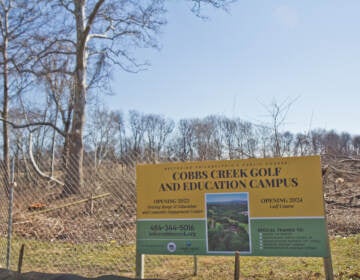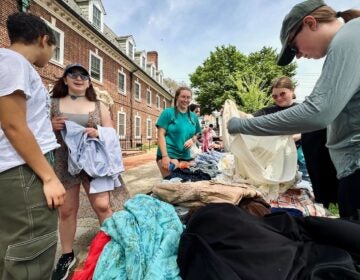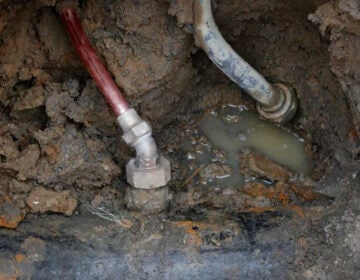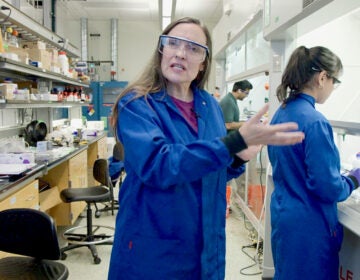Delaware students Zoom to Antarctica to learn about penguin research
Students at Caesar Rodney High School got a taste of a career in research, amongst penguins and seals on the West Antarctic Peninsula.

The research station in Antarctica. (Matthew Breece/University of Delaware)
A few dozen teens waited in a darkened classroom. A teacher urged them to put away their phones. Then, a visitor from half a world away appeared onscreen at the front of the room.
“Welcome to Palmer Station, Antarctica,” Matt Breece greeted the kids via Zoom call, his voice competing with the sound of buffeting winds.
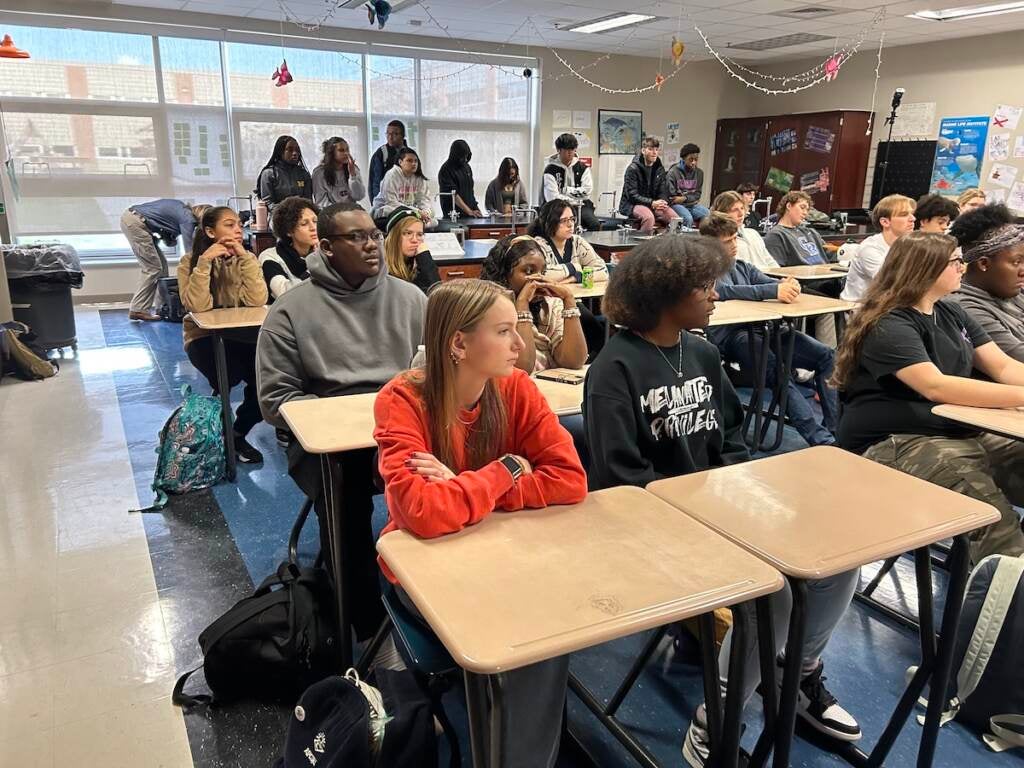
Breece, a research scientist at the University of Delaware, has lived at Palmer Station for the past ten weeks. He showed the students test tanks where researchers are running experiments, and a glacier behind the research station.
“It goes for a really long way — as far as you can see,” he said.
The Caesar Rodney High School students in central Delaware are learning about marine biology. Teacher Cristine Taylor connected with the research team to show her students about opportunities in the field. Outreach is also part of the UD lab’s work.
“Just to maybe get a couple hooks in people about science and, you know, scratch their curiosity,” said Mark Moline, a principal investigator on the project and a professor at UD.
The team’s research focuses on penguin populations in Antarctica and the availability of their food in a warming world.
The researchers track two different species of tagged penguins — Adélie and gentoo — and assess how ocean weather around the West Antarctic Peninsula impacts the distribution of the krill the penguins eat, and the phytoplankton the krill eat. To do this, the researchers use an autonomous underwater vehicle equipped with sensors.
“We program a mission and have it do its science, while we can either hide from the weather or monitor it closely,” Breece said.
Breece showed the students photos of penguins chilling on glaciers, a leopard seal snoozing on an ice pillow, and researchers at work on a boat. He even gave the students a look at the data the autonomous underwater vehicle produces, showing clouds of krill in a cross section of water.
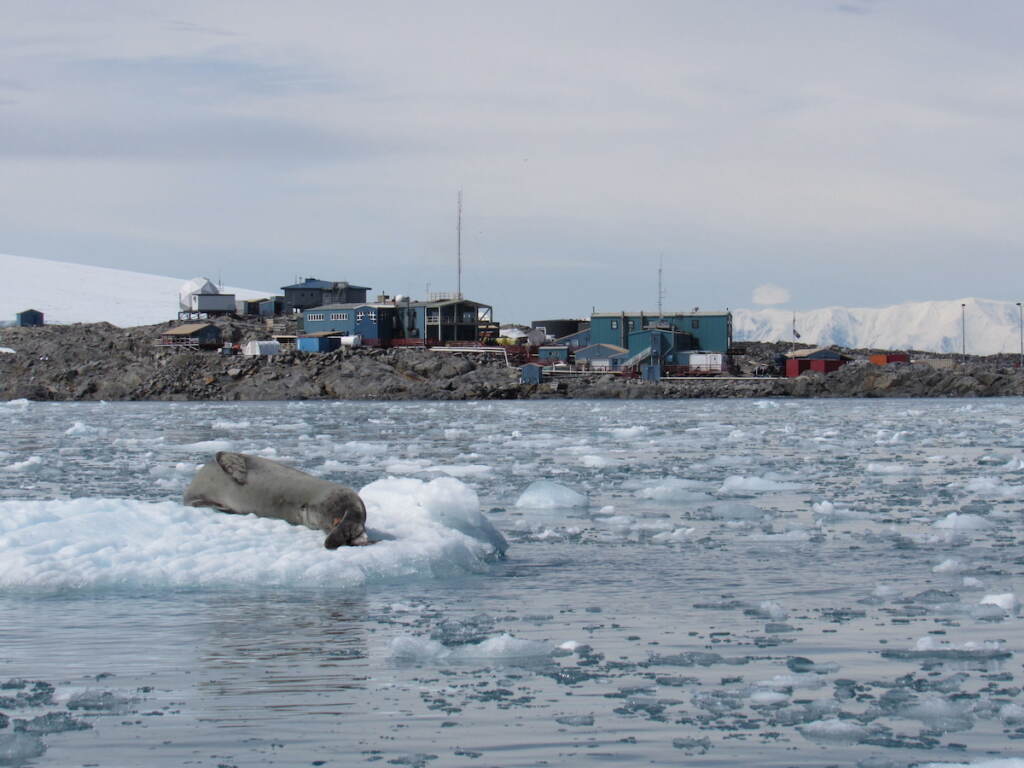
“We’re really immersed and living in the environment with all these different animals,” Breece said. “It’s really cool.”
“How fast can the penguins swim?” one student asked.
Surprisingly fast, according to Breece.
“The gentoo penguins … they’re the fastest of the penguins near Palmer Station,” he said. “They can swim 22 miles an hour, which is faster than the boats that we have here. So it’s really interesting to have … penguins swimming around the water and you think you’re going pretty [fast, but they] can go faster than you are.”
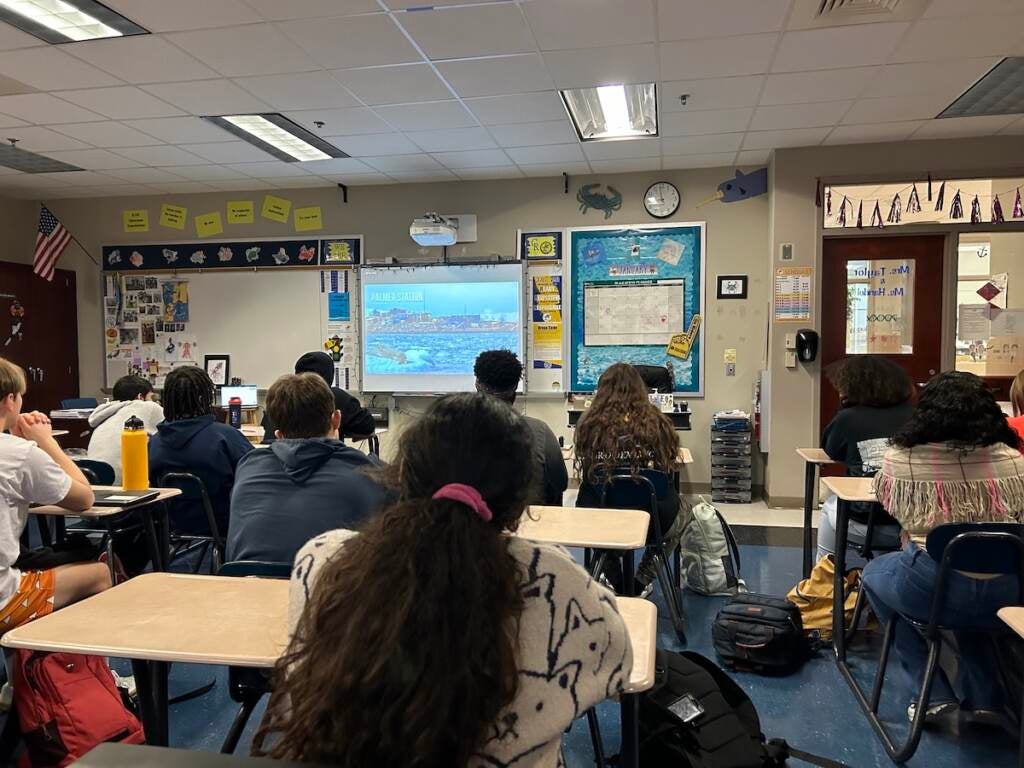
Another student was curious about Breece’s favorite species of penguin (chinstrap penguins, because “they’re funny”), and another about whether he’d seen a narwhal (yes, narwhals are real — but they live in Arctic waters, not Antarctic).
One student asked whether global warming is affecting the penguins in Antarctica.
The northern edge of the West Antarctic Peninsula, where Breece is stationed, is one of the fastest warming places on earth, he said. There, the population of Adélie penguins is shrinking, because they return to the same place they hatched to raise their chicks, despite the changing environment. But the gentoo penguins are thriving, Breece said, because they like it warmer and are able to migrate and adapt.
Not just scientists work at the research station. Breece counted cooks, carpenters, IT experts, an electrician, and a plumber.
“It’s essentially a little small town,” he said.
The fact that there are many different roles to play in marine biology research is a point science teacher Taylor underscores.
“The big thing that we like to do in marine biology is just show the students all the different opportunities that you can have with a marine biology degree, or something you can do in the marine biology field that isn’t necessarily going to college for ten years to become a scientist,” she said.
Celeste Montos-Carde, an 11th grader at Caesar Rodney, wants to pursue a career in marine biology or atmospheric science. She loves learning about how storms form and change.
“I don’t really see myself going to Antarctica, but I see myself going to different beaches, different islands, or going to tropical areas that have storms,” she said. “It’s just so exciting to see.”

Get daily updates from WHYY News!
WHYY is your source for fact-based, in-depth journalism and information. As a nonprofit organization, we rely on financial support from readers like you. Please give today.




